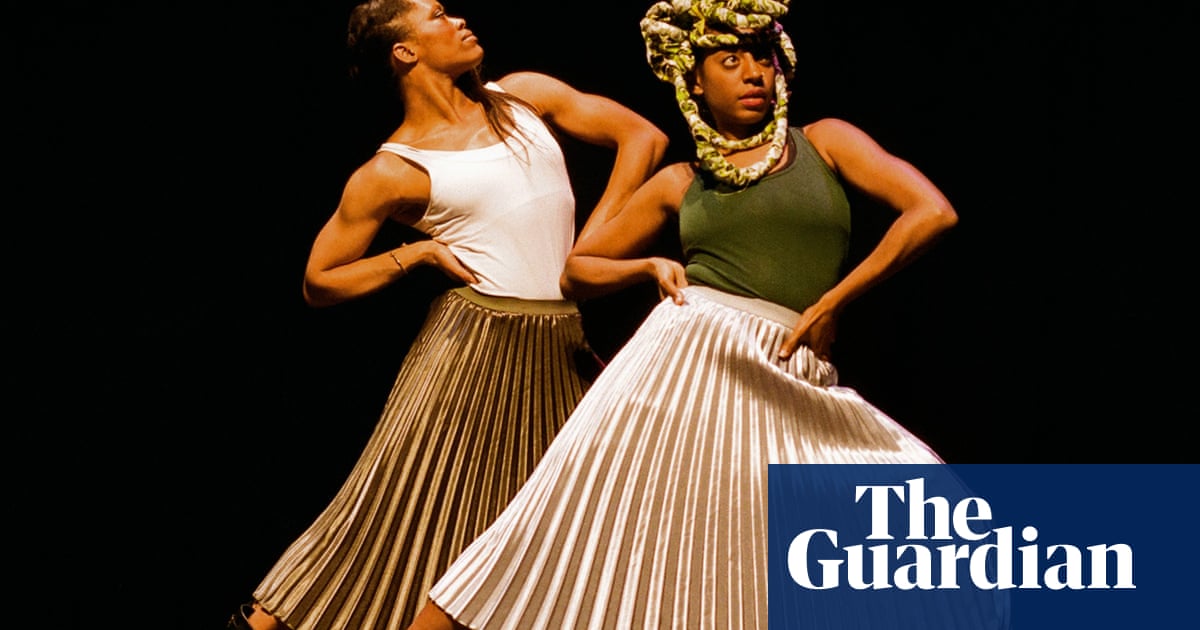
select committee hearing is not normally a place culture vultures go to spot works of art. Yet last week, eagle-eyed folk watching the health secretary, Matt Hancock, face a (remote) grilling on coronavirus couldn’t help spot something in the background: a garish image of the Queen overlaid with blue and pink spray-paint. The Art Newspaper confirmed that it was one of Damien Hirst’s “spin paintings”, donated to the government in 2015. It wasn’t hard to make the obvious link: a hapless health minister addressing the nation, accompanied by spin.
Since cities around the world have locked down, people starved of culture have been finding their kicks where they can – and often this means other people’s offices and living rooms. Gallerist Mitchel Algus was one of the first to find fun in spying the art lurking in the background when prominent figures appeared on TV in their own homes.
“I watch the PBS nightly news and when [former US treasury secretary] Lawrence Summers came on I noticed the Miró behind him,” says Algus. “It was just a print but I knew the painting [Bleu II, 1961]. And then I thought, ‘Now let’s see what else people have.”
Algus posted the image of Summers on his Instagram account, along with snaps of other journalists, experts and business people with their home artwork. Even when the art wasn’t interesting, Algus enjoyed “the voyeurism in seeing people’s homes and what they choose to put behind themselves”.
Algus was fascinated when a screengrab emerged of Alex Rodriguez, Jennifer Lopez’s husband and a former baseball superstar, talking on MSNBC with a work on his wall by Jonathan Horowitz – an appropriation of an earlier Roy Lichtenstein painting.
“What was interesting was how people at that level all have art advisers who push the same crap on them,” says Algus. “It’s the same kind of art-advised art that a lot of people have – like Jared Kushner and Ivanka Trump. It’s interesting to be able to see how very wealthy people interact with the art world.”
Matthew Higgs, the UK-born curator and director of White Columns in New York, has picked up the baton. On Instagram, he has been posting images of interviewees and their art from news reports.
Among those collected by Higgs were Democratic Senate leader Chuck Schumer and Thomas Frieden, former director of the US Centers for Disease Control and Prevention, both with hanging art that landed somewhere between minimalist and abstract. Nancy Pelosi, the senior Democrat in Congress, appeared on MSNBC with a painting thick with brush strokes and swipes of colour. After some online sleuthing it emerged that it was by the Chicago artist Wesley Kimler (who confirmed it in a comment under Higgs’s Instagram post).
“All of sudden we have these glimpses of other people’s realities that we normally wouldn’t have access to,” says Higgs.
Art has always been interwoven with the wider culture in unexpected ways. Higgs points to Allan McCollum who, in his Perpetual Photos series from the 1980s, took snapshots of his television whenever he saw a framed artwork on screen, and would then enlarge that image. In 1993, the German artist Timm Ulrichs published a book, Kunst und Leben (Art and Love), that collected images from old pornographic magazines where reproductions of famous art were visible in the background. “It’s thinking about domestic space and how culture finds its way into those spaces,” says Higgs.
In the mid 90s, the conceptual artist Mel Chin persuaded the makers of the LA-based soap opera Melrose Place to let him create original art, objects and props to be placed in the backgrounds of sets, in characters’ homes and workplaces. Chin put together a 100-strong team of largely unknown artists, billing themselves as the Gala Committee, to make art for the show – often bearing subversive or topical messages. In 2016 it was displayed in a gallery show.
Today, the art world is trying desperately hard to reach house-bound audiences. The larger galleries are providing some remote access to their collections and big shows, or attempting educational offerings. Commercial galleries have set up online “viewing rooms” – a number of small galleries in London have teamed with behemoth dealer David Zwirner to create such a platform; there’s a New York version, too. Elsewhere, places such as the ICA are sending out daily emails with notes on art ephemera, culture tips and everything in between.
Meanwhile, there’s still art to be found on TV. Recent Instagram updates from Higgs and others pointed to a CNN interview with Sean Combs – AKA P Diddy – in front of a painting by the Chicago-based artist Kerry James Marshall. The work, Past Times, was bought by the rap mogul in 2018 for $21.1m.
“I live in New York and I go to see galleries all the time,” says Higgs. “I take my dog for a walk around galleries. I miss that in-person perambulatory relationship with culture. So that was one of the nice things about seeing this stuff on the background of the news – culture found a way to creep back into your life.”












